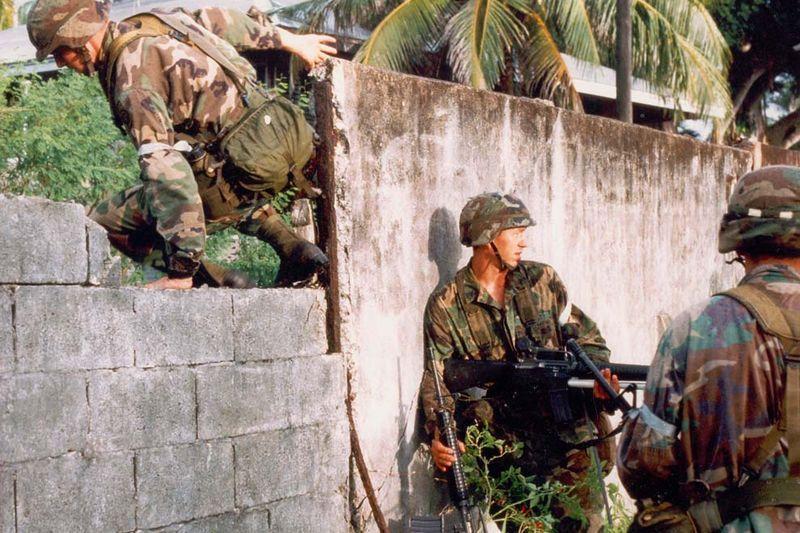The capture of El Chapo Guzman was a good and orchestrated long-term operation handled by Mexican authorities. It has become a headline four years ago. But, did the Mexicans did it by themselves solely?
Nearly 24 years ago, the United States deployed a small, secretive force to hunt for a drug kingpin whose merchandise had flooded American markets. Pablo Escobar’s cartel was believed to smuggle in at least 80 percent of the cocaine in the United States and was responsible for a wave of murders in Colombia that stretched back 15 years.
Author: Dan Lamothe
For more than a year, the U.S. military’s secretive Joint Special Operations Command (JSOC) rotated teams into Colombia from the Army’s elite Delta Force and the U.S. Navy’s Special Warfare Developmental Group, commonly known as DEVGRU or SEAL Team 6, according to the book “Relentless Strike,” a lengthy history of JSOC published last year by journalist Sean Naylor. The American Special Operations troops were supposed to be limited to training Colombia’s elite military forces but found ways to accompany them on missions.
On Dec. 2, 1993, Escobar was finally discovered through phone surveillance and killed in a raid. Rumors have long persisted that a member of Delta force killed him, but retired Army Lt. Gen. William “Jerry” Boykin, a longtime Delta operator, denied that was the case in his 2008 book, “Never Surrender.”
The operation bears consideration as the United States seeks the extradition of Joaquín “El Chapo” Guzmán, a billionaire drug lord who was captured Friday by Mexican marines in the coastal city of Los Mochis, near Baja California. An expansive article by the actor Sean Penn published by Rolling Stone magazine suggested that El Chapo knew that Mexican authorities and officials with the U.S. Drug Enforcement Administration were closing in, drawing on a secret visit Penn said he had with the kingpin in the mountains of Sinaloa, Mexico.
DEA officials said in a tweet that the capture of El Chapo is “further evidence of our two countries’ resolve to ensure justice is served for families who have been plagued by his ruthless acts.”
“The DEA and Mexico have a strong partnership and we will continue to support Mexico in its efforts to improve security for its citizens,” the agency added. “We will continue to work together to respond to the evolving threats posed by transnational criminal organizations.”
The DEA and Mexico have a strong partnership and we will continue to support Mexico in its efforts to improve security for its citizens
— DEA HQ (@DEAHQ) 8. siječnja 2016.
We will continue to work together to respond to the evolving threats posed by transnational criminal organizations.
— DEA HQ (@DEAHQ) 8. siječnja 2016.
The U.S. government has not detailed how it assisted in the capture of El Chapo. But a report by the online magazine SOFREP suggested that Delta Force operators and American law enforcement officials were involved in the mission. The report, which includes bloody photos said to be taken after a firefight with El Chapo’s forces, said that Delta troops served as tactical advisers but did not participate directly in the mission, citing multiple anonymous sources.
The SOFREP cite is run by former Special Operations troops and has been known to break some stories. In one example, they identified former Navy SEAL Robert O’Neill as the veteran who had anonymously described the raid that killed al-Qaeda leader Osama bin Laden in a 2013 article published by Esquire magazine. O’Neill later identified himself in an interview with The Post.
SOFREP’s new report on El Chapo could not be confirmed on Monday, and Mexican authorities said they carried out the operation on their own. But the involvement of the U.S. military in Latin America has long been a source of intrigue.

In another example, Delta Force, Army Ranger units and other Special Operations forces led the 1989 hunt for Manuel Noriega, the Panamanian leader who also had a long history of shipping cocaine to the United States. Operation Just Cause was approved by President George H.W. Bush in late 1989, and took only a few weeks, with Noriega turning himself over to U.S. troops on Jan. 3, 1990, according to an Army history of the operation.
Noriega was known to wear red underpants. According to the books by both Naylor and Boykin, a pair ended up in a display case at Fort Bragg, N.C., the home of both JSOC and Delta.
The article was originally published at the Washington Post.
Update: This story was updated to reflect that Mexican authorities said they carried out the operation without U.S. help.

